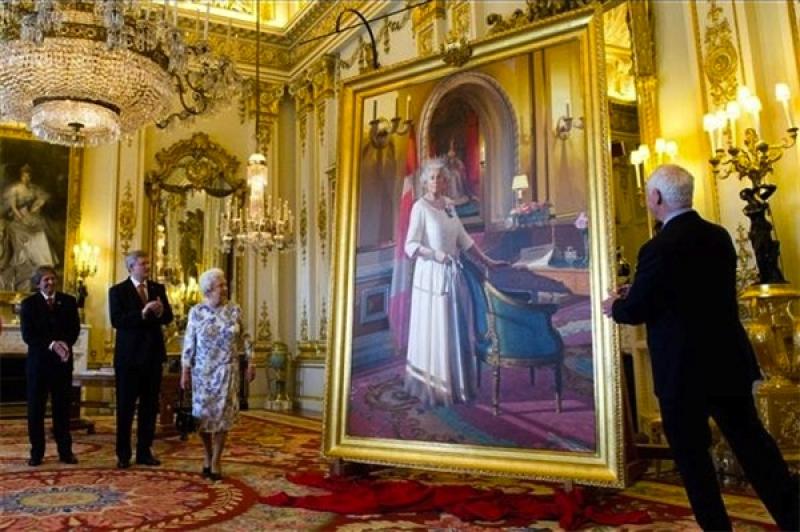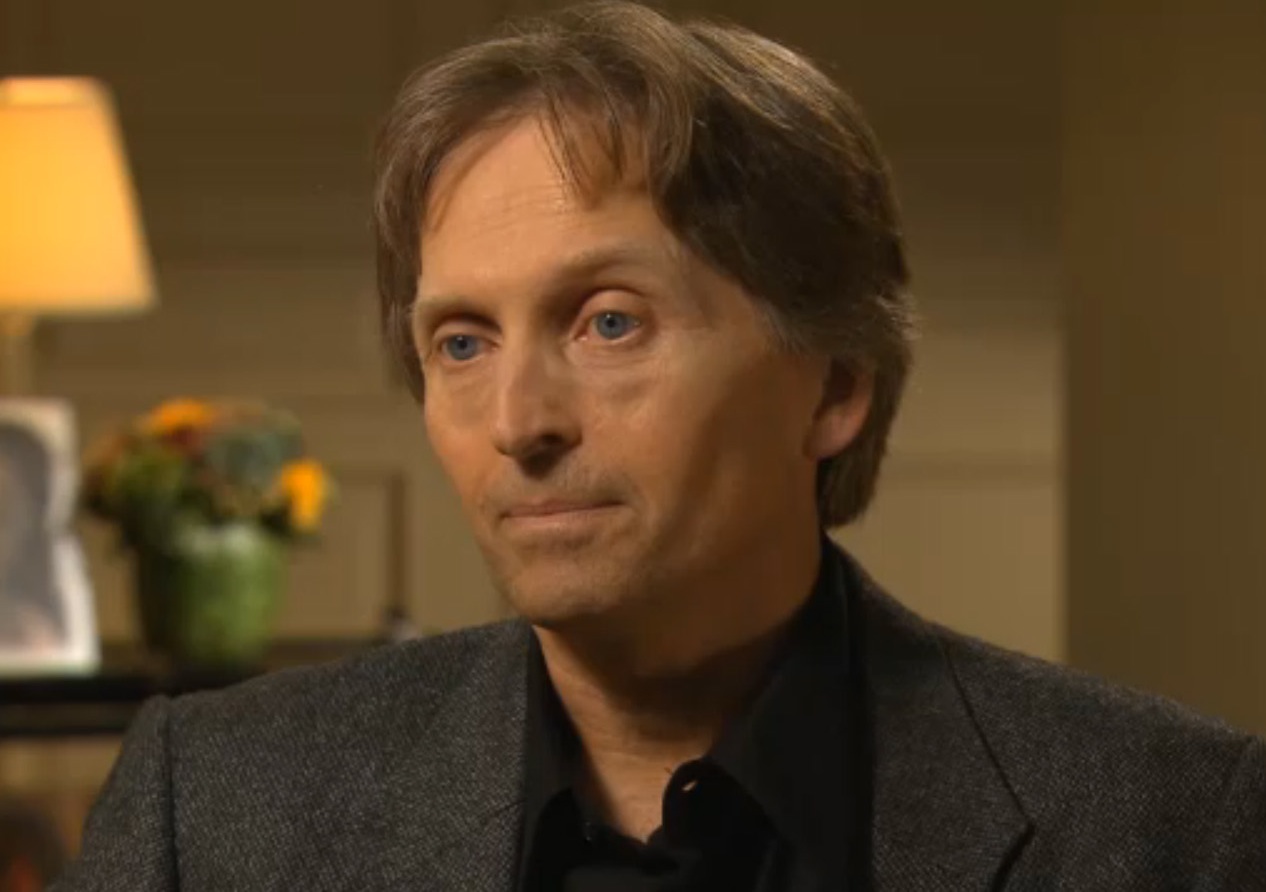Painting the Queen: A Portrait of Her Majesty, BBC Four | reviews, news & interviews
Painting the Queen: A Portrait of Her Majesty, BBC Four
Painting the Queen: A Portrait of Her Majesty, BBC Four
A look behind the scenes of a royal portrait commission

Has there ever been a successful portrait of the Queen? Not a photograph - there are been plenty of those (with its delicious air of ambivalence, Thomas Struth’s portrait of the Queen with Prince Philip stiffly occupying two ends of a sofa at Windsor Castle, is among the best) but a painted portrait.
Let’s cast our minds back. There’s Pietro Annigoni’s full-length portrait of a Elizabeth II painted just one year after her coronation. It shows the young Elizabeth in an arrestingly romantic vein, though this is a painting also edging towards kitsch, which seems unavoidable if you’re going to set her against a 17th-century Italianate landscape. Then there’s Peter Greenham’s less well-known pastel-coloured confection which currently hangs in the foyer of the Royal Academy, and which does, in fact, make me stop every time I pass it. Here Greenham has given her the look of a pretty china doll. Denuded of all the power and majesty of her office, she resembles little more than a decorous debutante, even though it was painted 11 years into her reign.
We don’t live in the age of Van Dyck, so it’s easy to see why contemporary royal portraiture is so difficult
Since we don’t live in the age of Van Dyck, it’s easy to see why contemporary royal portraiture is so difficult. It’s not just a likeness or a sense of personality you’re trying to capture – difficult enough when you’ve only got a very limited sitting time. And it’s not just that you’re trying to get a fresh angle on an old genre. What you’re trying to capture is the subtle interaction between the public and the private. This may be the case with almost every portrait of a well-known person, but it’s especially hard when that person happens to be the most photographed head of state, indeed the most photographed person in history.
More recently, there’s been Lucian Freud, whose head-only portrait made the Queen look cross-eyed and rather dyspeptic – a caricature that has something of the Queen of Hearts about it, and not the kind of Queen of Hearts imagined by Princess Diana but by Lewis Carroll. And then there was Rolf Harris, whose portrait might actually have fared better if the Queen hadn’t been baring her teeth. Few artists can do grinning portraits.
 Toronto-based artist Phil Richards (pictured right) was commissioned by the Canadian government to paint the Queen for her Diamond Jubilee, and whilst BBC Four’s Painting the Queen was a sensitive and beautifully drawn profile of Richards as he prepared to go to work, you were nonetheless made aware of a gap. It was rather like the gap commonly felt by artists, and writers, when they confront a finished work of their own making: what their mind’s eye envisaged is never quite as good as the reality, as Richards himself readily acknowledged on the programme.
Toronto-based artist Phil Richards (pictured right) was commissioned by the Canadian government to paint the Queen for her Diamond Jubilee, and whilst BBC Four’s Painting the Queen was a sensitive and beautifully drawn profile of Richards as he prepared to go to work, you were nonetheless made aware of a gap. It was rather like the gap commonly felt by artists, and writers, when they confront a finished work of their own making: what their mind’s eye envisaged is never quite as good as the reality, as Richards himself readily acknowledged on the programme.
And so, even though I really wanted to like Richards' Elizabeth II, I was aware of the distance between imagining the portrait’s possibilities – especially as the artist talked so eloquently about his portrait-painting process – and what confronted us in the end.
The finished 9 x 6 ft portrait, which shows the Queen in a state room at Buckingham Palace, now hangs at Rideau Hall in Ottawa and it looks just like the strange plastic model, no bigger than his hand, that Richards made of his sitter in the absence of the real thing. What’s more, his favoured style of cluttered realism makes everything in the garishly gold, red and green-bedecked room demand our attention with equal force. Richards said he had always dreamt of painting the Queen. He even went as far as to say it was “the pinnacle” for any portrait painter. There is, indeed, a cruel gap between dreams and reality.
Add comment
The future of Arts Journalism
You can stop theartsdesk.com closing!
We urgently need financing to survive. Our fundraising drive has thus far raised £49,000 but we need to reach £100,000 or we will be forced to close. Please contribute here: https://gofund.me/c3f6033d
And if you can forward this information to anyone who might assist, we’d be grateful.

Subscribe to theartsdesk.com
Thank you for continuing to read our work on theartsdesk.com. For unlimited access to every article in its entirety, including our archive of more than 15,000 pieces, we're asking for £5 per month or £40 per year. We feel it's a very good deal, and hope you do too.
To take a subscription now simply click here.
And if you're looking for that extra gift for a friend or family member, why not treat them to a theartsdesk.com gift subscription?

Comments
To me the portrait seems a
I love it